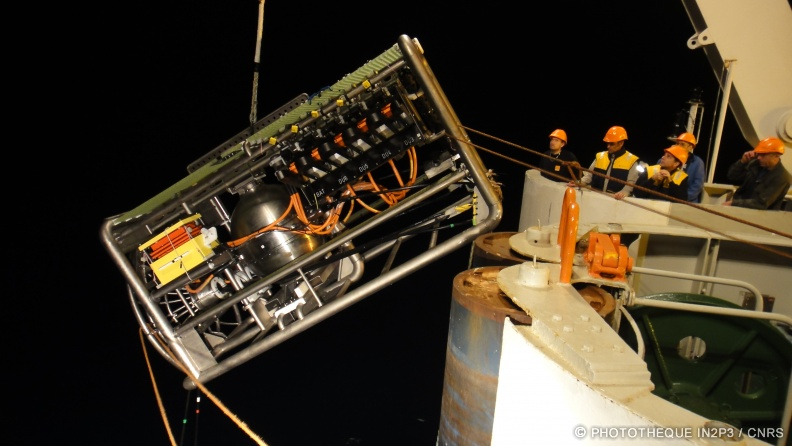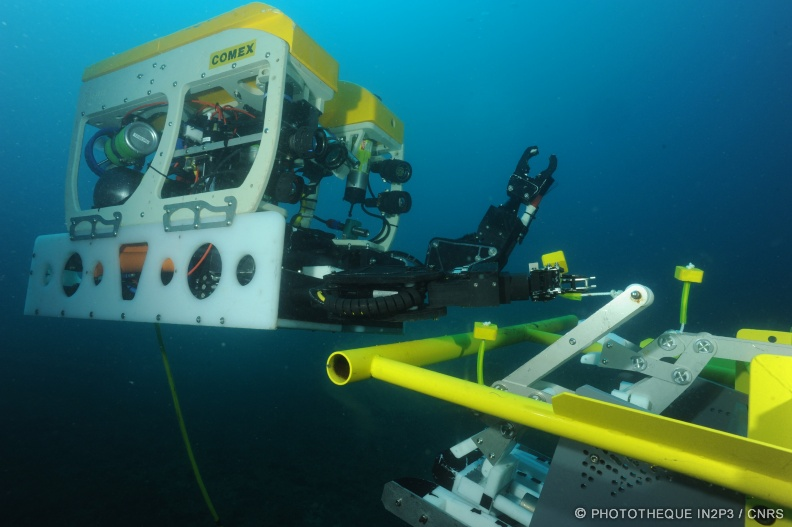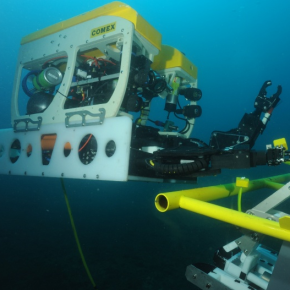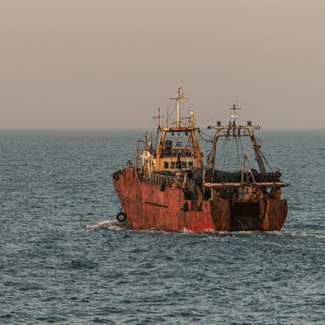
Laboratory at bottom of Mediterranean for probing sea and sky
|
The CNRS Laboratoire Sous-marin Provence Méditerranée, co-directed with Aix-Marseille University and IFREMER, is a pioneering new research platform. At >2 km under the sea surface, it houses instrumentation for studying the seabed; climate change; and the physics of neutrinos, elementary particles from space. The base, which is linked to the surface by cables, has just been inaugurated (24 February 2023).
The Laboratoire Sous-marin Provence Méditerranée (LSPM) lies 40 km off the coast of Toulon, at a depth of 2,450 m, inaccessible even to sunlight. Through this national research platform run by the CNRS in collaboration with Aix-Marseille University (AMU) and IFREMER, scientists will investigate undersea unknowns while scanning the skies for neutrinos. These elementary particles of extraterrestrial origin know few obstacles and can even traverse our planet without bumping into a single atom.
The main instrument at the LSPM is KM3NeT1 , a giant neutrino detector developed by a team of 250 researchers from 17 countries. In the pitch-black abyss, KM3NeT will study the trails of bluish light that neutrinos leave in the water. Capable of detecting dozens of these particles a day, it will help elucidate their quantum properties, which still defy our understanding.
The other LSPM instruments will permit the scientific community to study the life and chemistry of these depths. They will offer researchers insights into ocean acidification, deep-sea deoxygenation, marine radioactivity, and seismicity, and allow them to track cetacean populations as well as observe bioluminescent animals. This oceanographic instrumentation is integrated into the subsea observatory network of the EMSO2 European research infrastructure.
LSPM is structured around a series of titanium junction boxes and intelligent systems able to power multiple scientific instruments and retrieve their data in real time, through a 42-km-long electro-optical cable. The base currently has three junction boxes, but the future addition of a second cable could bring the number up to five.
Inaugurated in Marseille on 24 February 2023—in the presence of AMU President Eric Berton, Centre IFREMER Méditerranée Vice Director Bruno Andral, and CNRS Chairman and CNRS CEO Antoine Petit—the LSPM embodies the unique expertise of teams from the Marseille Particle Physics Centre (CNRS / AMU), the Mediterranean Institute of Oceanography (CNRS / AMU / IRD / University of Toulon), the Technical Division of the CNRS Institut National des Sciences de l'Univers, the Laboratoire d’Informatique et Systèmes (CNRS / AMU), the Institut de Physique des Deux Infinis de Lyon (CNRS / Claude Bernard Lyon 1 University), and the Geoazur laboratory (CNRS / Côte d’Azur Observatory / IRD/Toulon University), in association with the French oceanographic fleet.
The LSPM is funded by the CNRS, the Provence-Alpes-Côte d’Azur Regional Academic Delegation for Research and Innovation (DRARI), the Sud–Provence-Alpes-Côte d’Azur regional authority, the Bouches-du-Rhône departmental council, the Aix-Marseille-Provence metropolitan authority, and the city of Marseille, within the scope of a French State–Region Planning Contract (CPER). It was also made possible by earlier European Union (European Regional Development Fund) and French government funding3 .

© Damien Dornic, CPPM, CNRS / PHOTOTHEQUE IN2P3

© COMEX, CNRS / PHOTOTHEQUE IN2P3
- 1KM3NeT = ‘cubic-kilometre neutrino telescope’.
- 2EMSO = European Multidisciplinary Seafloor and water column Observatory.
- 3The previous French funding sources included the French Ministry of Research (Provence-Alpes-Côte d’Azur DRARI), the CNRS, the Sud–Provence-Alpes-Côte d’Azur region, the city of Marseille, AMU, the Var departmental council, and the Toulon Provence Méditerranée metropolitan authority. The LSPM is also supported by the city of La Seyne-sur-Mer, where its control room and power station are based; Pôle Mer Méditerranée; the University of Toulon; and the wide-ranging marine expertise of industrial players within the Sud–Provence-Alpes-Côte d’Azur region.


